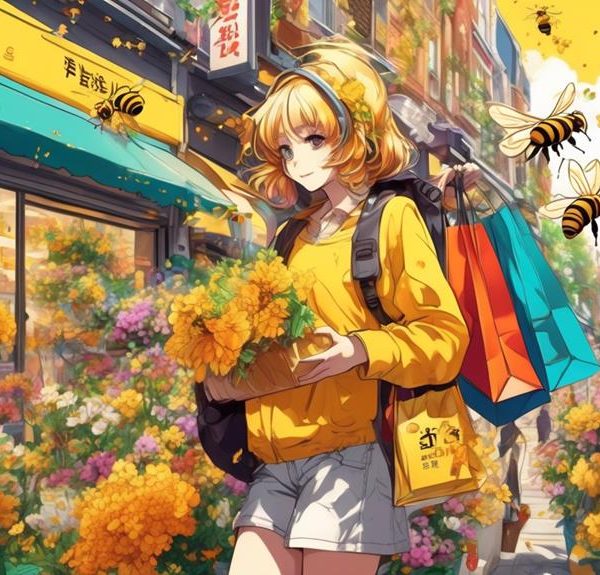Investigate the intriguing relationship between mason bees and honey bees, and how their coexistence impacts our ecosystem.

Can Mason Bees and Honey Bees Coexist?
'Variety is the spice of life,' so they say, and this certainly rings true in the diverse world of bee species.
You've likely heard about honey bees, with their complex societies and vital role in pollination. But what about their solitary cousins, the mason bees? They're less well-known, but equally fascinating.
Can these two very different species coexist peacefully, or do they compete for the same resources? And how might their interactions affect our ecosystems?
Let's explore this intriguing topic further, and you might just find your perspective on bees transformed.
Key Takeaways
- Mason bees and honey bees have specialized roles and differing preferences, allowing them to coexist without significant conflict.
- Providing a variety of nesting sites is crucial for enhancing the coexistence of mason bees and honey bees.
- Planting a mix of native flowers that bloom at different times ensures a steady food supply for both species.
- Minimizing the use of pesticides and adopting organic gardening practices improves the survival rates of both mason and honey bees.
Understanding Mason Bees

To truly appreciate the importance of Mason bees in our ecosystem, it's crucial to understand their unique behaviors, life cycle, and their role in pollination.
Unlike honey bees, Mason bees are solitary, meaning they don't live in colonies. Each female is a queen, laying eggs in small cavities and then sealing them with mud, hence their name.
Their life cycle is fascinating. Mason bees emerge in spring, mate, and then the females begin their work. They locate suitable cavities and lay one egg per space, providing it with a food source of nectar and pollen. After sealing each egg in its chamber, they move on to the next. Come winter, the adult bees die off, leaving the eggs to develop and emerge the following spring.
As for their role in pollination, you'd be astonished. Mason bees are more efficient pollinators than honey bees. They're more likely to gather pollen from many different plants, increasing cross-pollination. This makes them vital for maintaining biodiversity and supporting plant reproduction.
Understanding Mason bees is the first step in appreciating their vital role in our ecosystem.
The Role of Honey Bees
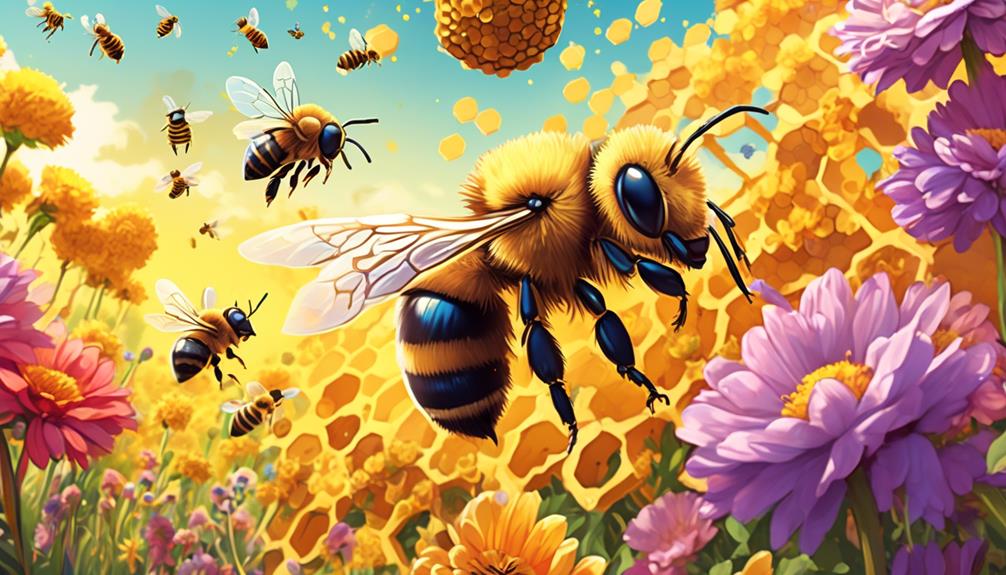
Diving into the world of honey bees, you'll find that these social insects play a vital role in our ecosystem by pollinating a considerable portion of our food crops. They're not just about making honey; they're essential for biodiversity and the survival of many plant species.
You mightn't know it, but honey bees are responsible for pollinating about one-third of the food that you consume daily. Fruits, vegetables, nuts, and seeds are all dependent on the tireless work of these industrious insects. They transfer pollen from the male parts of a flower to the female parts, thus enabling fertilization and the growth of new seeds.
But it's not just about food. Honey bees also contribute to the pollination of plants that provide habitat and food for other wildlife, thus maintaining biodiversity. They're nature's little gardeners, helping to grow the plants that make up our beautiful, diverse landscapes.
The decline in honey bee populations worldwide is therefore a significant concern. It threatens not just our food supply, but our entire ecosystem. So, understanding the role of honey bees and finding ways to support them is more critical now than ever.
Habitat Preferences and Differences
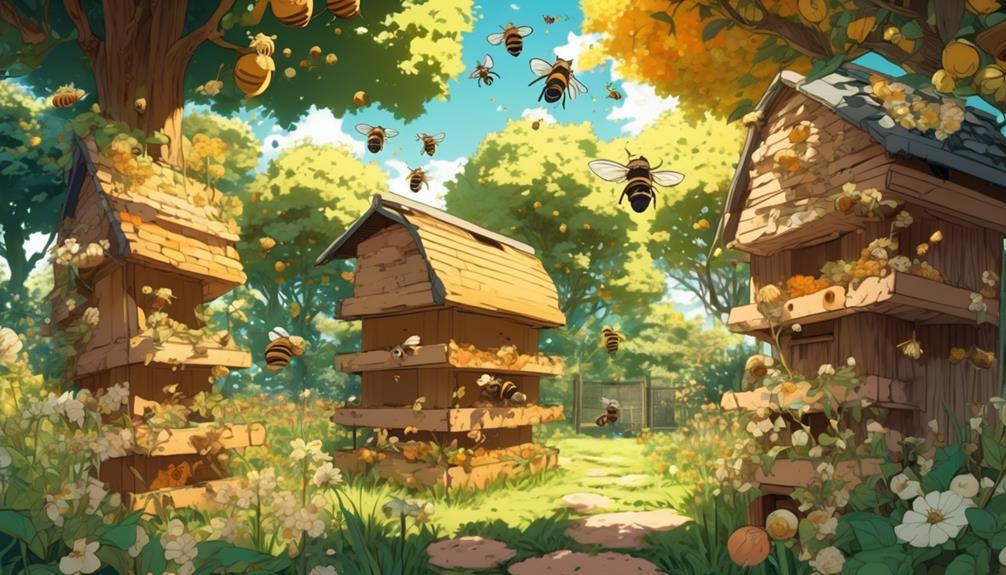
When you compare the habitat preferences of honey bees and mason bees, you'll notice distinct differences that directly impact their respective roles in the ecosystem.
Honey bees are social insects, forming complex colonies within hollow trees or man-made hives. They thrive in diverse environments, from wild landscapes to urban settings, as long as they've access to a wide range of flowering plants.
Conversely, mason bees are solitary creatures. Unlike honey bees, they don't build hives. Instead, they nest in pre-existing holes in wood or masonry, hence their name. They're most commonly found in wooded or garden areas where they've ample access to mud for sealing their nests and a variety of flowering plants for foraging.
These habitat preferences reflect their unique ecological roles. Honey bees, being highly social, are adept at long-range foraging and pollinating a variety of plants, contributing significantly to agricultural productivity.
Mason bees, on the other hand, are excellent at localized pollination due to their solitary nature and preference for a narrower range of flowers. Understanding these contrasts is crucial for promoting coexistence and biodiversity.
Competition or Cooperation?
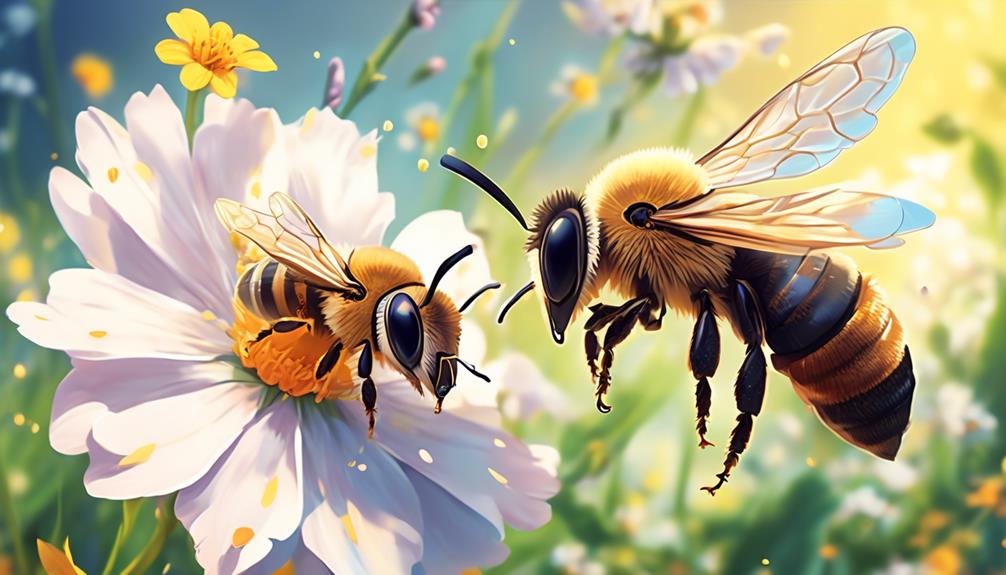
Given these distinct habitat preferences and ecological roles, it's intriguing to examine whether honey bees and mason bees are in competition or cooperation with each other.
You might assume that these species, sharing the same environment, would naturally compete for resources. However, their specialized roles and differing preferences often allow them to coexist without significant conflict.
Consider this table for a clearer picture:
Mason Bees | Honey Bees | |
|---|---|---|
Food Source | Primarily pollen | Nectar and pollen |
Foraging Time | Early morning and late afternoon | Throughout the day |
Pollination | More efficient | Less efficient |
Habitat | Solitary, in holes or tubes | Social, in large hives |
The mason bee's preference for pollen and their foraging times often reduces competition with honey bees who forage throughout the day and consume both nectar and pollen. Furthermore, the solitary nature of mason bees versus the social structure of honey bees lessens the likelihood of territorial disputes.
Enhancing Bee Coexistence
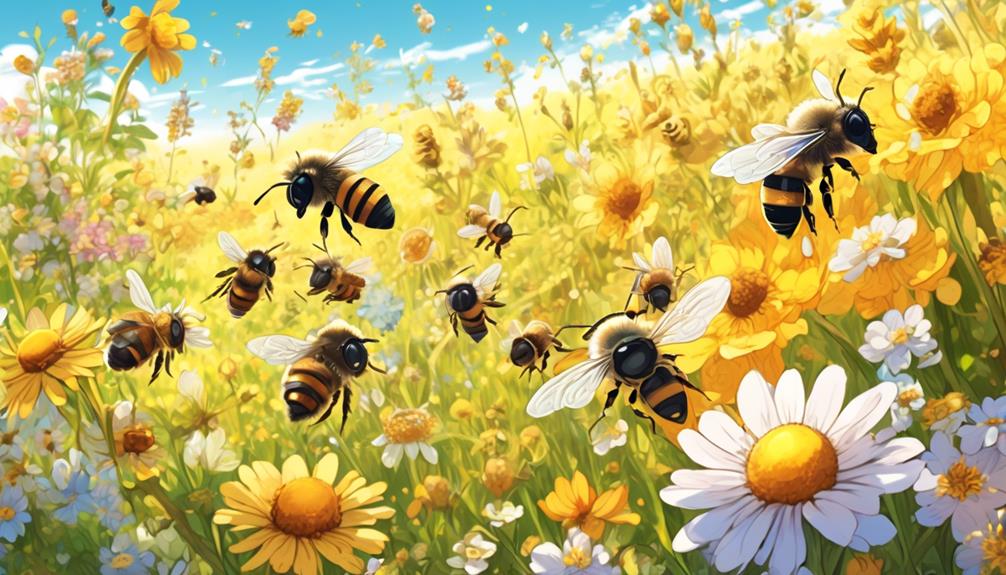
To enhance the coexistence of mason bees and honey bees, it's essential to understand and accommodate their different preferences and behaviors, thereby promoting biodiversity and a healthier ecosystem. Each species has unique nesting habits: mason bees nest in small cavities and hollow stems, while honey bees live in larger, communal hives. By providing a variety of appropriate nesting sites, you can support both species.
It's also vital to consider their different foraging patterns. While mason bees are solitary foragers that prefer nearby food sources, honey bees can travel great distances in their search for nectar and pollen. Hence, planting a mix of native flowers that bloom at different times can ensure a steady food supply for both.
Additionally, minimizing the use of pesticides can significantly improve the survival rates of these beneficial insects. Pesticides can contaminate the nectar and pollen bees collect, leading to their decline. By adopting organic gardening practices, you can create a safer environment for both mason and honey bees.
Frequently Asked Questions
What Are the Specific Threats That Both Mason and Honey Bees Face in Their Natural Habitats?
You're curious about the threats both Mason and Honey bees face in their natural habitats. They're under threat from habitat loss, pesticides, diseases, and climate change.
Loss of wildflowers and safe nesting sites is a big issue. Pesticides can weaken their immune systems, while diseases like mites and fungi can devastate populations. Climate change is disrupting their food supply and lifecycle timings.
It's a tough world out there for these vital pollinators.
Are There Any Specific Diseases That Affect Mason Bees or Honey Bees?
Yes, there are specific diseases that can affect both mason and honey bees.
You might've heard of Colony Collapse Disorder, it's particularly devastating for honey bees.
Varroa mites, Nosema fungi, and American foulbrood bacteria are also common threats.
Mason bees are susceptible to chalkbrood and goudiebrood diseases.
It's important to monitor your bees for signs of these diseases and seek treatment if necessary.
What Are the Economic Implications of Declining Honey Bee and Mason Bee Populations?
Yes, you're right to worry about the economic implications of declining honey and mason bee populations. They're key pollinators for many crops. If their numbers drop too low, crop yields can suffer, raising food prices and hurting farmers' incomes.
It's not just about honey production – these bees help us grow fruits, vegetables, nuts, and seeds. So, we're all impacted financially when bee populations decline.
It's a serious issue that needs attention.
Are There Any Laws or Regulations Protecting These Bee Species?
Yes, there are laws protecting bees. In the U.S, the Endangered Species Act protects certain bee species.
It's important you're aware of local and state laws as well, as they can vary. For instance, some states have specific protections for pollinators like bees.
It's crucial you don't harm protected species, so always check regulations before engaging in activities that could impact bees.
How Can Individual Homeowners Contribute to the Conservation and Coexistence of These Bees?
You can contribute significantly to the conservation of both Mason and Honey bees.
Start by planting diverse, native plants in your garden, providing ample food sources.
You'll also want to limit pesticide use, as it can harm these beneficial insects.
Consider installing bee houses to provide shelter for Mason bees, while leaving some areas of your garden untidy can offer nesting sites.
With thoughtful actions, you're supporting a healthier environment for these vital pollinators.
Conclusion
Indeed, you'll find that mason bees and honey bees can coexist peacefully. Their differing habitat preferences and roles in pollination reduce competition, encouraging cooperation instead.
By understanding these bees and their needs, you can foster a thriving environment for both. So, don't hesitate to welcome these industrious insects into your garden.
They'll not only coexist but will also significantly contribute to your local ecosystem's health and diversity.


